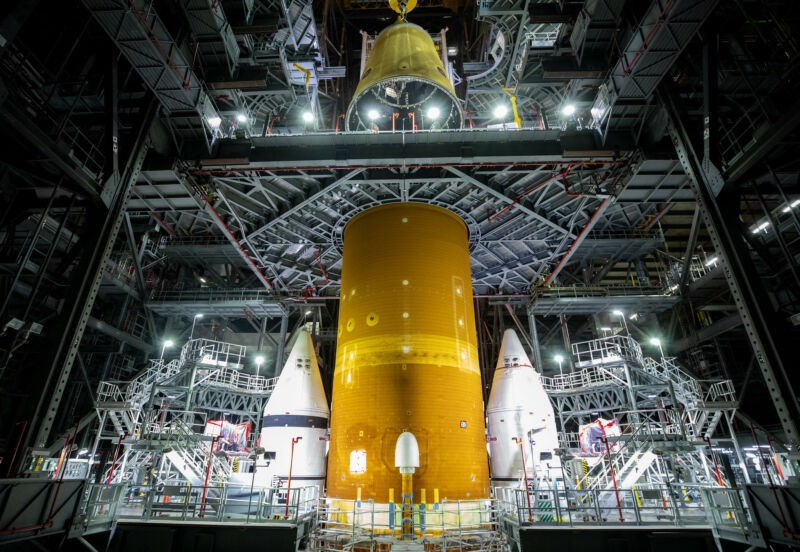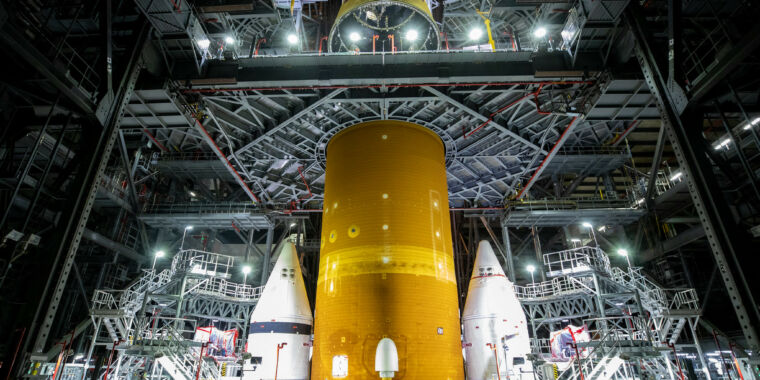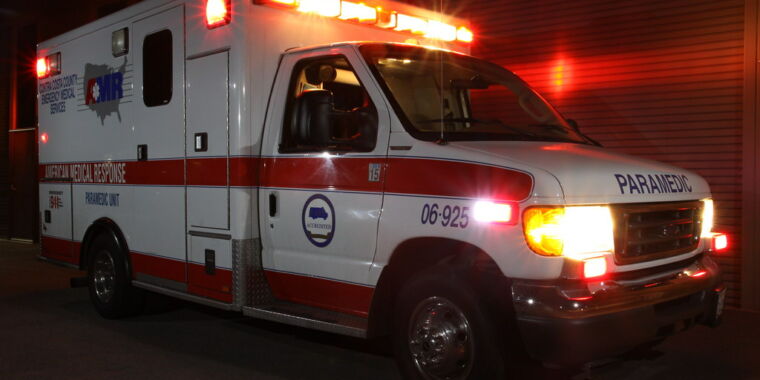
NASA said Wednesday that it is now targeting “mid-February” for an initial rollout of the Space Launch System rocket to the launch pad.
The space agency set the new date after engineers and technicians successfully removed a faulty engine controller from one of the four space shuttle main engines that power the massive rocket. An engine controller is basically a flight computer that communicates between the engine and the rocket; this one had failed communication tests in late November.
At present, NASA engineers, alongside contractor teams who have built various components of the rocket, are working to complete all remaining SLS preflight diagnostic tests and hardware close-outs prior to rolling the fully stacked rocket to the launch pad at Kennedy Space Center.
After it reaches the pad on its mobile launch tower, the rocket and its ground systems will undergo a “wet dress rehearsal.” The operation will provide a dynamic test of the launch vehicle in terms of its hardware, the new ground systems at Kennedy Space Center, and software for the integrated vehicle. During this test, the vehicle will be fully fueled with liquid hydrogen and liquid oxygen, and a countdown will be performed to about T-10 seconds.
The interfaces between the rocket, spacecraft, and ground systems haven’t been tested in this manner before. Historically, this is when issues have occurred with new vehicles. NASA aims to perform this wet dress test in “late February.”
After the wet dress test, the SLS rocket will return to the Vehicle Assembly Building for the installation of some pyrotechnics for the actual launch before rolling back to the launch pad for liftoff.
Prior to the engine-controller issue, NASA had hoped to conduct the wet dress rehearsal in early January, thereby preserving an opportunity to launch during a two-week window in February. That never seemed realistic, and NASA has now lost six to eight weeks of schedule before even getting to the wet dress test.
In its update Wednesday, NASA said it will set a target launch date after a successful wet dress rehearsal. Theoretically, if all goes smoothly, SLS might make its launch window in April. However, more realistically, May probably offers the earliest launch opportunity. Given the potential for issues to arise during the wet dress rehearsal, especially with the interplay between so many large, complex systems, a summer 2022 launch date is also possible for the SLS rocket and NASA’s uncrewed Artemis I mission around the Moon.
This would be consistent with reporting by Ars last August, which stated, “The best-case scenario for launching the Artemis I mission is spring of next year, with summer being the more realistic target for a test flight of the heavy-lift rocket and Orion spacecraft.” At the time, NASA was targeting a launch before the end of 2021.








